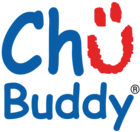Applied Behavioral Analysis or “ABA” therapy has become a leading treatment for children on the spectrum.
As a mother of two Autistic boys, I know ABA all too well. Hours of daily sessions for both boys, have essentially ensured that our therapist has become one of the family!
With all the access my family has to these specialists, I figured why not take some time to ask questions that may assist other families struggling with similar chewing related issues. So let’s get to it!
For legalities, we will call our therapist, “Jane”. Jane has approximately 11 years of experience in both center-based ABA therapy, as well as in-home. She has worked with all severities, assisting over 60 children throughout her career. She is fully accredited and licensed.
Me: Jane, I would like to focus on the use of chews as an effective treatment for biting, SIB (self-injurious behavior), chewing, Pica, sensory issues, etc.
Does ABA typically recommend the use of chews with their clients, and if so, why exactly?
Jane: Oh absolutely! We generally always utilize chews as a form of intervention and a better substitute for undesirable biting/oral behaviors. They have proven to be successful with a wide range of children and though they may not completely erase the chewing behavior entirely, they do encourage the child to utilize the chew vs their body or non-edible objects. I typically introduce chews immediately when addressing issues such as SIB or Pica. The challenging part is finding the right chew to satisfy the child’s need.
Me: What behavior do you typically recommend chews for?
Jane: We lean towards chews any time biting, chewing or any mouth stimulation is involved. This includes various disorders and behaviors such as Autism, SPD - Sensory Processing Disorder, Pica, SIB, injurious behavior towards others, Bruxism or teeth grinding - even when children are experiencing dental issues. They really treat a wide range of issues.
Me: How do you implement consistent use of the chews?
Jane: That’s a great question! This is where everyone needs to be on board with the treatment and the approach to the treatment. Like most processes introduced in my field, this does require a lot of time and repetition. Once we’ve found a chew that is tolerated, we begin by replacing every instance of the chewing, biting, etc. with the desired chew. And that means giving the chew to the child, even raising to the child’s mouth, over and over. Eventually, we find that the child learns to accept the chew and begins enjoying chewing the chew, replacing the non-edible. This takes place all through session and needs to also be carried through by the family as well. We usually find that the family is pretty eager to support the use of chews, as most are already pulling hands down from their child’s mouth or removing the non-edible item. We are simply giving them a better option to chew on!
Me: I can attest to that working actually! And surprisingly, like you said, it wasn’t difficult as a family carrying it on once the session ended as we naturally were already tending to the behavior.
Me: What types of chews are more popular with clients?
Jane: I’d say the chewy tubes, textured P, Q or T chewies and definitely the bracelets and necklaces.
Me: Yes! The Chubuddy Spiralz necklaces are my son’s favorite! He also likes vibrating chews like the Vibrazilla or vibrating baby teething rings.
How quickly can parents anticipate seeing results after introducing the chews?
Jane: Every child is different, so that is a difficult question to answer. I can say in my personal experience, a solid 2-3 weeks of consistent replacing works wonders!
Me: What should a new special needs parent look for that indicates a problem exists that a chew may remedy?
Jane: Chewing of their hands, fingers, arms, clothing, etc. Chewing any non-edible object that is in their environment - think items that a child would not/ should not normally chew on. Drooling, biting, teeth grinding are big indicators as well. I always tell parents to trust their gut. They’re usually spot on when something isn’t right.
Me: Well, that’s all I have for now! Thank you so much for taking the time to sit with me.
Do you have any questions as a caregiver for Jane? Leave a comment and we will have Jane answer this for you!
For more information or assistance, email us at Info@chubuddy.com.
